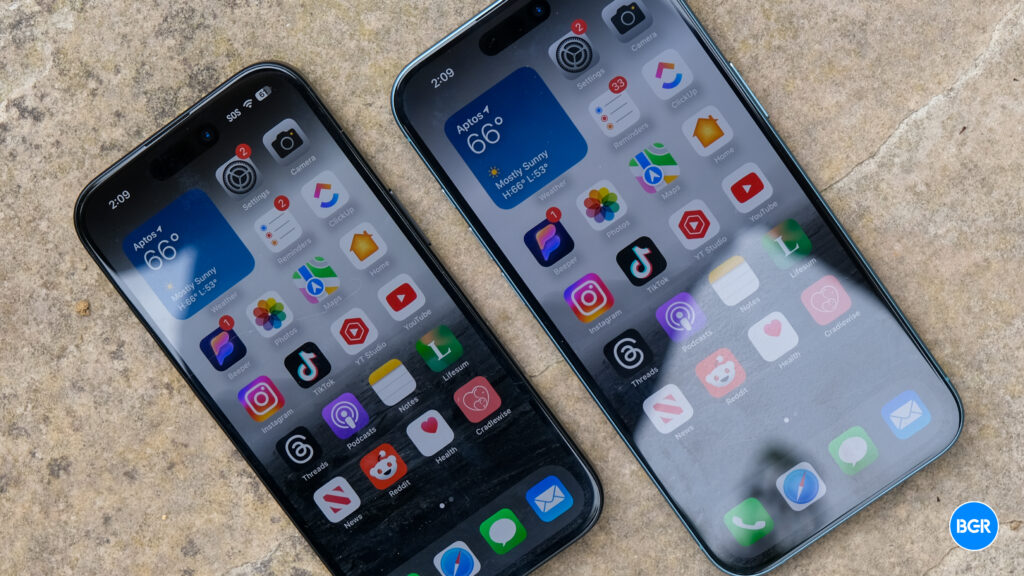I think about the iPhone 17 Air every time I have to readjust the position of the iPhone 16 Plus in my pants pocket. I do it when I run, tie my shoelaces, walk uphill, get into a car, sit down… you name it. There’s no guarantee that Apple will make the ultra-thin iPhone 17 Air. But I do dream about an iPhone with a large display that isn’t as bulky as the Plus or Pro Max.
Since the first rumor emerged that Apple is working on a slimmer iPhone, I kept seeing clues suggesting Apple could make such a device. Various components are getting thinner than ever, including Samsung RAM modules and ultra-thin batteries for foldable phones.
But I also want an ultra-thin smartphone with the best possible battery life. The iPhone 16 Plus lasts more than a day on a charge, so I’d want that from the rumored iPhone 17 Air. More energy-efficient iPhone chips could help with that. And, it turns out, some brand-new display tech that might be partly responsible for Apple Watch Series 10 battery life improvements could be another key factor in the iPhone 17 Air.
My 42mm Apple Watch Series 10 lasts between 30 and 36 hours on a charge. That’s almost double the official 18-hour estimate Apple offers. In the past, I beat that estimate with previous models, but I never got such amazing results.
I wear the Watch throughout the day, including during sleep and marathon training sessions. I also recharge the wearable when its battery life drops between 20% and 30%.
The only thing I do differently than most Apple Watch Series 10 users is turn off the Always On display functionality. But other Apple Watch Series 10 users who left it on experienced similarly good battery life.
Sure, the chip inside the latest wearable must be responsible for the impressive battery life. But the new screen tech that Apple has introduced with the Apple Watch Series 10 might also be to blame. That’s a next-gen LTPO3 screen tech that makes the screen visible from wider angles.
I must admit that I don’t care as much about those wider angles as I don’t use the Always On functionality. But that’s not the only benefit of LTPO3 tech. The drive TFT (thin-film transistor) that sends electricity to the OLED screen is more efficient than in previous versions. This translates to efficiency gains and longer battery life.
You probably see where I’m going with this. The Apple Watch Series 10 display tech will pave the way for more efficient screens in devices like the iPhone 17 Air that I want.
A report from The Elec says the display industry is paying attention to Apple’s LTPO3 advancements for the Apple Watch Series 10. Apple will likely use the tech in future iPhones.
Apple did the same with LTPO (Apple Watch 2) and LTPO2 (Apple Watch Ultra). The iPhone 13 Pro got the original LTPO tech, which made ProMotion (dynamic 1-Hz -120Hz refresh rate) possible on iPhones. The iPhone 16 Pros feature LTPO2 screens.
The Elec says that Samsung is looking at LTPO3 tech. Samsung might even manufacture displays for the Apple Watch Series 11 next year. So far, Samsung has stayed away from the Apple Watch, with LG Display being the main screen supplier for the various Watch models.
Unfortunately for my iPhone 17 Air dreams, the report notes that Apple will use LTPO2 for all four iPhone 17 models next year. LTPO2 is more efficient than LTPO but not as good as LTPO3. But there should be an iPhone 18 Air after the first model. Eventually, all iPhones should move to LTPO3.
Also, if the report is accurate, there’s a great silver lining in all of this. Moving all four iPhone 17 models to LTPO2 tech means all of them will support dynamic 120Hz refresh rates. If there’s an Air in the iPhone 17 series, it would support ProMotion, which is a battery-life-saving tech.
The regular iPhone 16 and iPhone 16 Plus don’t support refresh rates higher than the default 60Hz.

